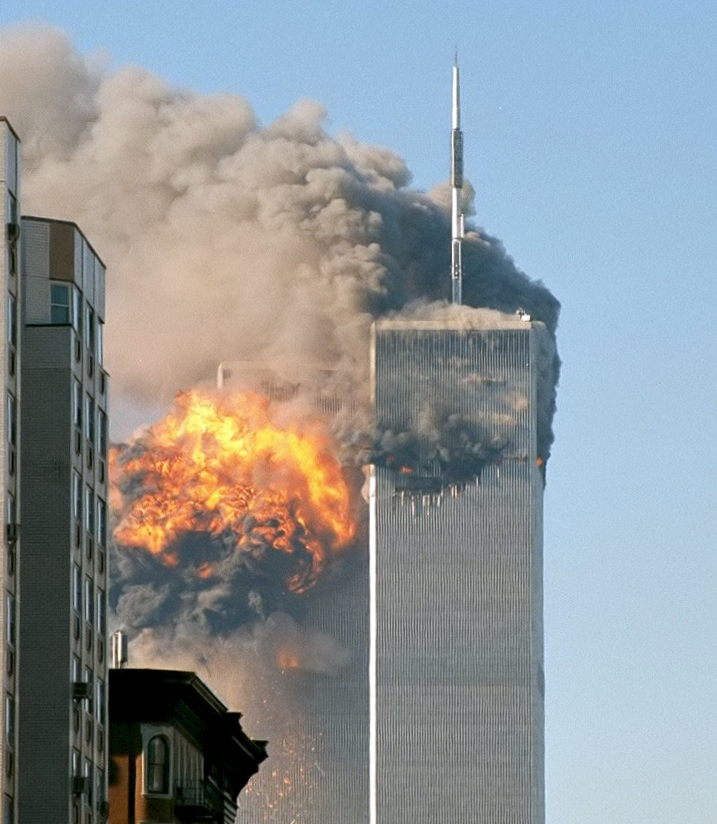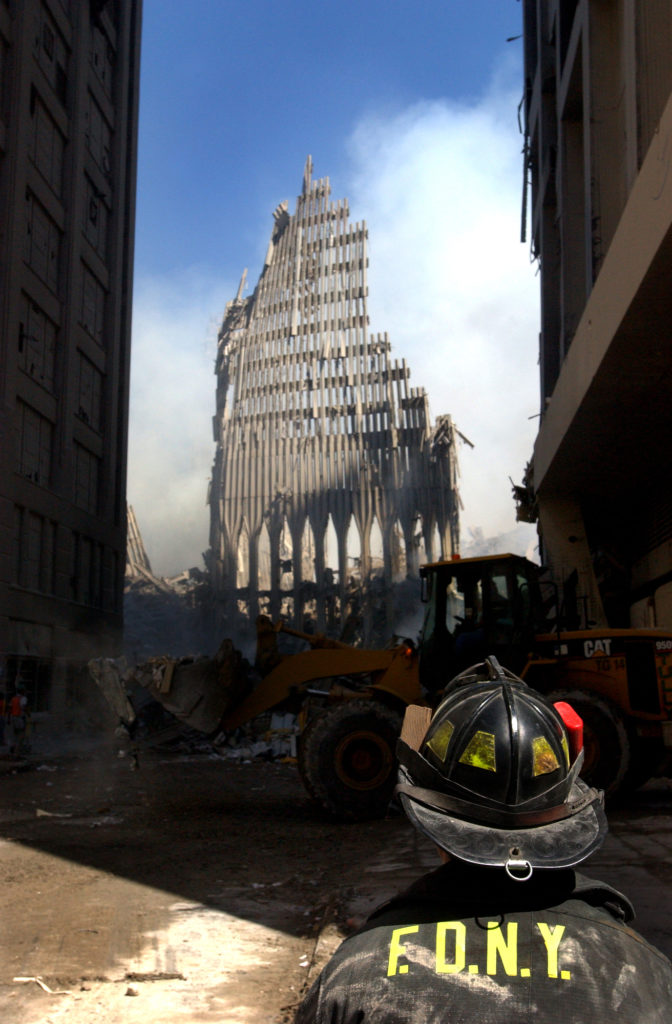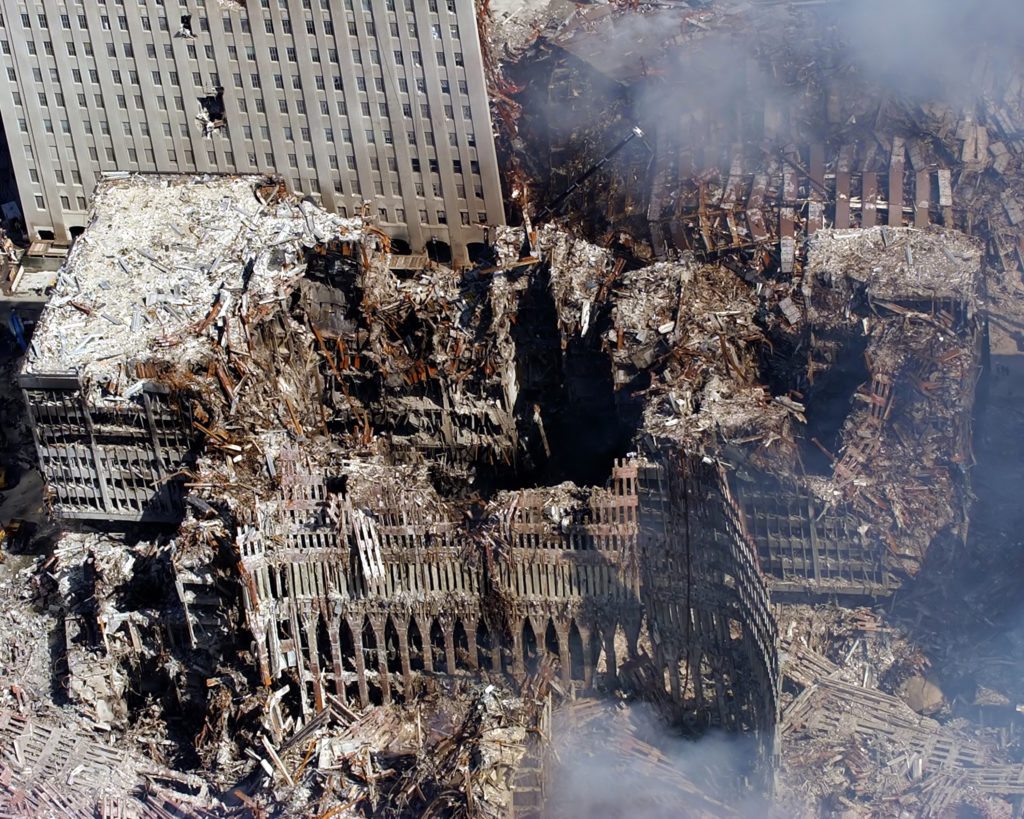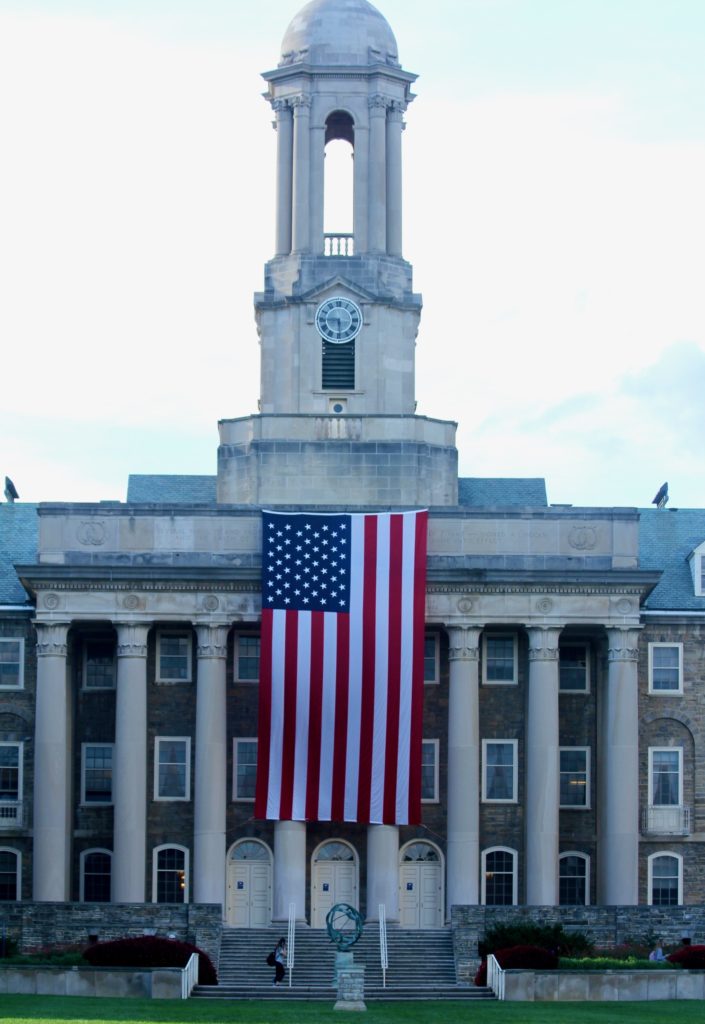Clarabelle Lin’s train into Manhattan on the morning of September 11, 2001, took her past the World Trade Center before the two planes crashed into the towers. Hours later that evening, she was able to leave the city on a packed commuter train. She’ll never forget the sight of the smoke billowing from where the towers had stood.
Jill Shockey grew up in Somerset County, and her mom was teaching at Shanksville Elementary School when people heard a boom from the crash of Flight 93 and saw the school’s ceiling tiles shake.
Laura Fiochetta worked across the street from the Pentagon when it was struck, and she spent two panic-filled hours trying to get home to safety while American fighter jets flew overhead.
Many have their own memories of finding out about the attacks and how it affected them. As the country marks the 20th anniversary of the attacks, local residents, some who lived at the time in the areas affected by the attacks, share their experiences – some very close and vivid – from that day.
***

A commuter to Manhattan from northern New Jersey, Clarabelle Lin arrived at her midtown office in the Colgate-Palmolive Co. building around 8:30 that morning, before the first plane hit at 8:46 a.m.
The first indication was from a co-worker who had heard on the radio about the first plane crash. Lin and her co-workers watched the news on TV in a conference room, seeing what was happening a few miles away from them at the World Trade Center.
“We were just watching this unfold from the beginning,” she said. “It’s something you don’t forget easily.”
Lin said her company made the employees stay on site so they could account for everyone. When she was able to leave the city around 6 p.m. on one of the first trains that was running, she stood shoulder to shoulder for the 45-minute ride. There was an exodus from the city.
“It was nothing like a normal train – so many people on that platform were trying to get home,” she said. “I was literally a sardine in that train because it was so packed.”
On the way out, she passed the trade center site where two skyscrapers had stood hours earlier.
“All you could see was two gigantic smoke stacks where the World Trade Centers were,” said Lin, who now lives in State College with her family. “You can’t erase that kind of image.”

***
RELATED:
Sharing Stories of 9/11 Moves Profound Loss and Fear Toward Love and Hope
***
When Tamra Fatemi-Badi saw news footage of the attacks on the twin towers in New York, she first thought it was a movie. She was living in an expat community in Riyadh, Saudi Arabia, with her family while her husband worked for a company there.
Fatemi-Badi said the attacks created two contrasting sets of realities: The community rallied to comfort and support them and other Americans as they saw a heightened security presence all around them.
For instance, their Canadian friends gave them Canadian flags and stickers to put on their cars. “You didn’t talk about being American,” she said.
When officials announced that 15 of 19 of the hijackers were Saudi, Fatemi-Badi said their family’s Middle Eastern friends apologized. “They said that’s not who we are,” she said.
The comfort couldn’t displace the ramping up of security. Fatemi-Badi said the Saudi national guard increased security around the expat compound where her family lived. Their children’s school increased its security, too. Western women, who had draped a scarf over their shoulders instead of wearing it to cover their heads, put their scarves on when they left the compound to blend in as much as possible.
“Things got different very quickly,” she said.
Her family ended up leaving a few years later after several Al-Qaeda bombings on other expat compounds in Riyadh. “They wanted to make a statement that Westerners were not welcome in their country any longer,” said Fatemi-Badi, who lives in State College.
***
Jill Shockey was the editor of Town&Gown on 9/11, and around 10:30 that morning, her dad called her to say that her mother was okay.
Shockey did not know what happened in New York and Washington. When her dad told her about a plane crashing in Shanksville, Pa., near the elementary school where her mother taught, she couldn’t believe it hit so close to home.
“I had no idea what he was talking about,” she said, adding that she ran to the suite’s breakroom to turn on the TV. “I remember I just leaned against the breakroom table and just watched it and was shocked. I couldn’t process it.”
As Shockey later heard from her mom and would be able to piece together from news reports, Flight 93 crashed in a reclaimed mine pit a few miles from the school. Its target was believed to be the Capitol in Washington.
Shockey’s mother said parents were starting to come to the school to take their kids home after the attacks in New York and on the Pentagon.
That morning, people in the school heard a “sonic boom,” Shockey said, “and the ceiling tiles fluttered.”
They thought it was an explosion at Stoystown Tank and Steel Co. A mushroom cloud over the treetops told a different story, which they would later learn.

***
Patrick Schurr from TV station WTAJ was one of the first journalists on the scene at Shanksville. He heard a call on the police and fire scanner that a plane had crashed in Somerset County.
He arrived to find a smoldering crater but no sign of the plane – no wing, no fuselage, nothing.
He said WTAJ interrupted CBS’ national coverage to go live from Somerset County, where he talked to the anchor, Carolyn Donaldson, by phone.
Donaldson asked if there was a chance of survivors. Schurr was grim: “I don’t think there’s any chance of survivors here, and there’s nothing but a smoldering hole in the ground,” he said on his live report that day. “You would still have no idea that a plane would bury itself in the ground like that and disintegrate.”
Schurr spent the whole day at the scene, conducting interviews and reporting updates as he got them from the FBI. He said he remembers an interview with eyewitness Lee Purbaugh “as clear as day,” even 20 years later.
“He said he saw the plane fly overhead, and then it just turned upside down and nosedived into the ground,” Schurr said Purbaugh told him.
Schurr stayed in Shanksville for the next several days, sleeping in the news truck. In the days that followed, the family of those who died on Flight 93 came to the crash site.
“We were able to report and tell the stories about the 40 men and women who saved the Capitol building,” he said.
It was “without a doubt” the biggest story he covered in his journalism career, said Schurr, who now works in sales in Altoona, and one that journalists worked so hard to cover.
“It was such a unique moment in time and such a landmark event in the country’s history,” Schurr said. “We had the duty and responsibility to relay that information and tell the story from this small part of the country. There was an enormous responsibility, and we all took great pride and respect in that.”

Photo by Tech. Sgt. Cedric H. Rudisill USAF
***
A co-worker of Laura Fiochetta’s saw Flight 77 crash into the Pentagon from her office window.
Fiochetta was working for the American Red Cross at its national headquarters, which was in a building across the street from the Pentagon. The co-worker had an office that overlooked the Pentagon.
“All of a sudden, I heard screams down the hall. She said the Pentagon exploded, and she was just hysterical,” Fiochetta said.
As the employees learned about the other attacks, they went into emergency response mode. They wanted to get albumin, a protein in human plasma that the Red Cross delivers to hospitals, to Manhattan, though they later learned that there were no expectations of many survivors in New York. They would not need the supply.
Fiochetta said she heard that the former USA Today building, which was in the nearby Rosslyn area of Arlington County, Va., was another target, and that’s when she decided to leave. She was seven months pregnant and had a 2-year-old daughter in day care; she just wanted to get her child and get home safely.
“I thought it was scary being in the building I was in,” Fiochetta said.
She left her parking garage and was in such gridlock that it took two hours to get home. The drive was surreal, she said.
“You can’t escape. You’re stuck,” she said. “There’s no access to communication services – you couldn’t make calls because everything was jammed. You don’t know what’s going on. There are fighter jets flying over my head. Is there another plane coming? Can I get out?”
***
Jodi Vender, of State College, knew three people who were on Flight 77. Two were former colleagues from the National Geographic Society in Washington, D.C., where she worked before she moved to State College. The third was a teacher, who was in a group going on an educational trip to California.
Vender said the staffers, Joe Ferguson and Ann Judge, were “close colleagues” of hers. Ferguson was the director of the geography education program, and Judge was the director of the organization’s travel office.
“It’s one of those things that every year, particularly at 9:46 when the plane went into the Pentagon, that I get especially choked up,” she said.

***
At Penn State, Annemarie Mountz grabbed her camera from her office in the public information department and headed out on campus to document what was happening..
The university didn’t cancel classes, she said, and faculty members were encouraged to use their class time to discuss what had happened and give students a chance to process the horrific events.
Mountz attended a class taught by journalism instructor Russ Eshleman, who had his students write whatever they wanted with the option to share.
“One female student, she just broke down crying as she read what she wrote,” Mountz said. “What she wrote was that she had family in the World Trade Center and the Pentagon, and she didn’t know for hours if they were alive or dead. Her trauma was very real.
“The students found that writing about it, reading it, and experiencing it, and having the support of their classmates and their faculty in that moment, was really helpful.”
Outside the classrooms, Mountz said students lined up to donate blood at the Ritenour Building, and the university set up locations where students could talk with a counselor. And a vigil on the Old Main lawn later that night helped add to the sense of support and unity that the community needed that day.

***
The feeling of unity and solemnity gets Dana Wilcox each 9/11 anniversary. She was a senior in high school near Lewisburg on 9/11 and did not have any close personal connections. But on the first anniversary, though, a student in her college class was sharing a story about her uncle who was in the World Trade Center that day. Wilcox wanted to comfort her.
“I remember going up to her afterward and saying, ‘I’m really glad your uncle made it.’ She grabbed me and started crying,” said Wilcox, who lives in State College. “It was a year removed and there’s still this emotion.”
Since then, Wilcox has visited the three memorials at the crash sites. She even attended the opening of the Pentagon’s memorial in 2008. She said it’s important for her to honor such an important day.
“It always hits me,” she said. “The day just brings a certain connectivity among strangers.”
This story appears in the September 2021 issue of Town&Gown.



